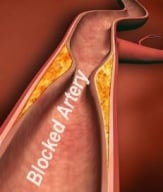Life-Changing Cabbage – Coronary Artery Bypass Graft Surgery
Koreans would tell you that Kimchi – a spicy, fermented CABBAGE dish – can change your life. However, our apologies to Kimchi. In this article we are discussing the Coronary Artery Bypass Graft surgery, also known by its initials CABG and pronounced “cabbage.” It is also known as heart bypass surgery.
When a sticky substance called “plaque” starts to clog the arteries near the heart, a person may experience chest pain, shortness of breath, tiredness, and dizziness with nausea. These symptoms are triggered when the coronary arteries fail to deliver enough oxygen and nutrients to heart – the only muscle in the body that NEVER rests.
A referral by your personal physician will result in tests and attempts to control the blockages. Common approaches include changes in lifestyle or a minimally invasive procedure, such as angioplasty – where a balloon is inserted in the blocked artery and expanded to clear it. Another minimally invasive procedure places a “stent”, a tiny, metal scaffold that keeps the artery propped open, inside the blocked artery.
Coronary Artery Bypass Grafting is often a necessary option – in fact, CABG is the most common open-heart operation in the United States and is performed with less risk than removing a ruptured appendix. It is the most lasting of the techniques we have to offer.
THE PROCESS
A cardiothoracic surgeon will go into the chest cavity using an artery or vein from the patient’s leg, arm or chest. The replacement vessel is sewn around the blocked artery. Blood flows through the “new” artery, bypassing the blocked one.
TYPES OF CABG
Traditionally, surgeons divide the middle bone of the chest, the sternum, to gain clear access to the heart. The heart is stopped so the surgeon can operate. A heart-lung machine maintains blood flow and oxygen for the patient. After the bypass graft is in place, the heart’s function resumes and normal blood flow is established.
Off-Pump CABG. Occasionally surgeons perform the bypass surgery while the heart continues beating. It has application in patients with certain types of anatomy, that would benefit from this approach.
OUTLOOK AFTER SURGERY
The good news: Results are usually excellent. Recovery happens quickly. Discomfort from the incision should resolve in a week.
As the body recovers, patients can feel fatigued. But most patients soon report feeling more energized. Patients may return to driving in less than a month.
The not-so-good news: CABG does NOT CURE Coronary Heart Disease. It gives the patient a new lease on life – reducing the risk of heart attack.
But good diet, moderate exercise and the ability to quit smoking are necessary for long-term good health.
To find a physician, click here.
Sources include: McLeod Health, Society of Thoracic Surgeons, Society for Cardiovascular Angiography and Interventions, American Heart Association, National Heart-Lung-&-Blood Institute.
-
McLEOD REGIONAL MEDICAL CENTER FLORENCE
843-777-2000 -
McLEOD DARLINGTON
843-777-1100 -
McLEOD DILLON
843-774-4111 -
McLEOD LORIS
843-716-7000 -
McLEOD SEACOAST
843-390-8100 -
McLEOD CHERAW
843-537-7881 -
McLEOD CLARENDON
803-433-3000



-
McLEOD REGIONAL MEDICAL CENTER FLORENCE
843-777-2000 -
McLEOD DARLINGTON
843-777-1100 -
McLEOD DILLON
843-774-4111 -
McLEOD LORIS
843-716-7000 -
McLEOD SEACOAST
843-390-8100 -
McLEOD CHERAW
843-537-7881 -
McLEOD CLARENDON
803-433-3000
 Find a Doctor
Find a Doctor  Locations
Locations  Services
Services 